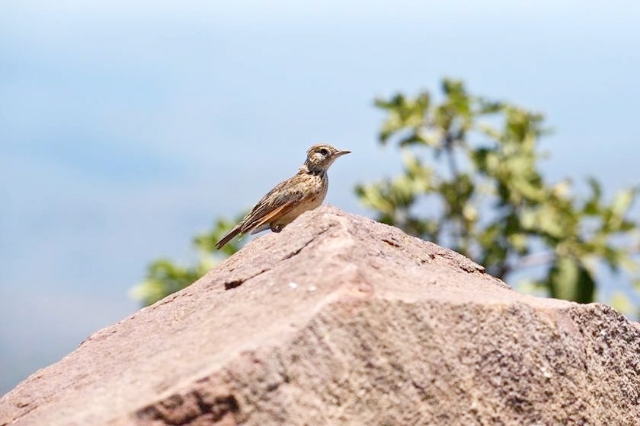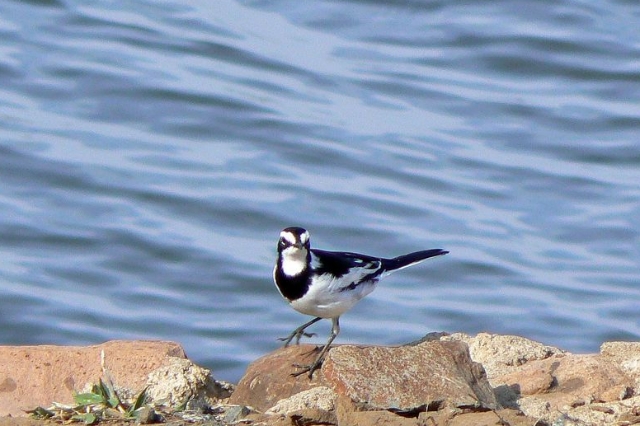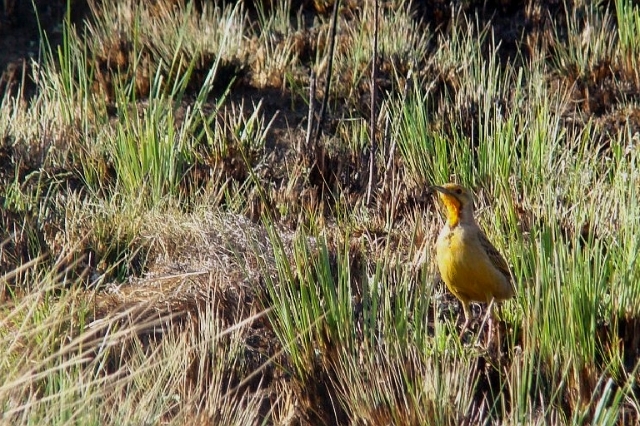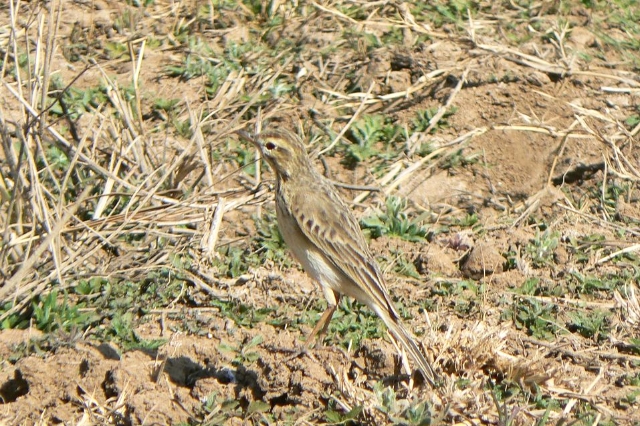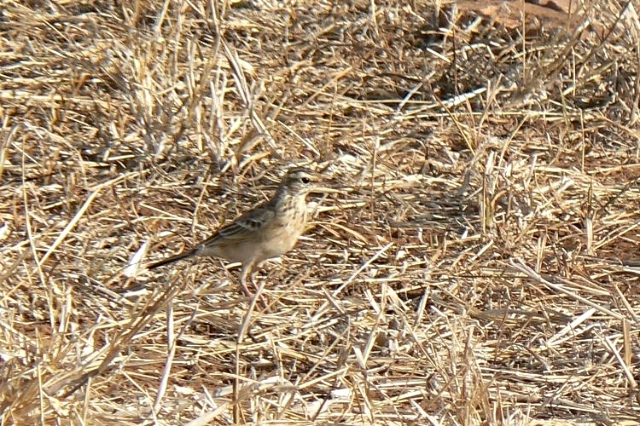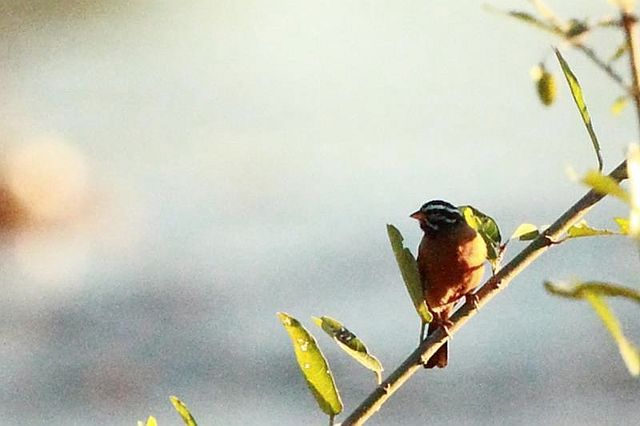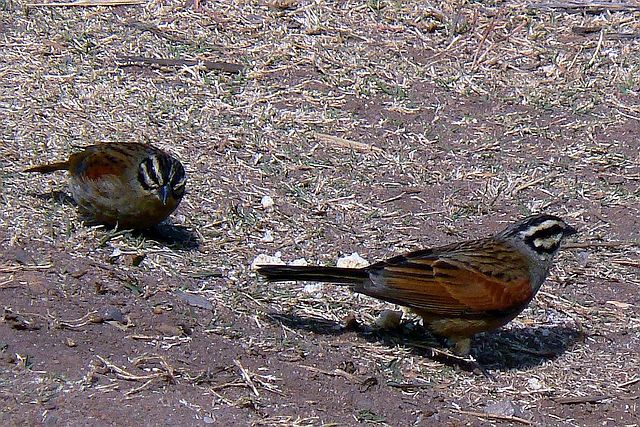Yellow-fronted Canary Crithagra mozambica
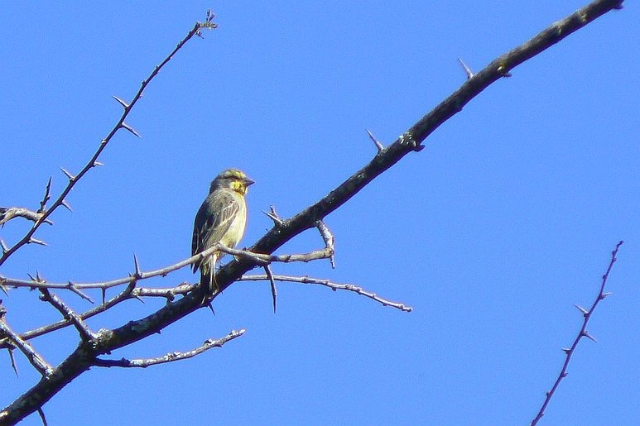
Swaziland, Hlane, 30 August 2014
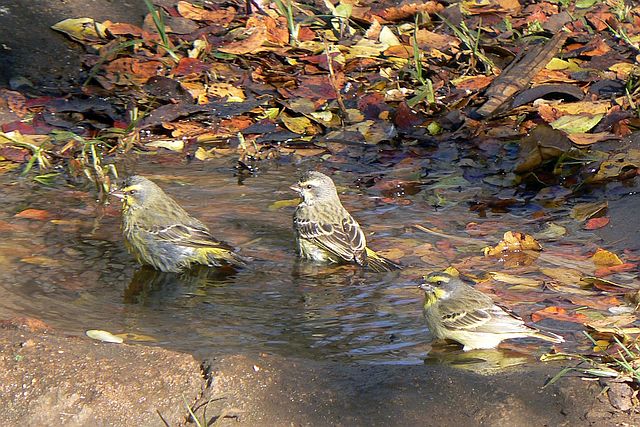
Swaziland, Hlane, 31 August 2014
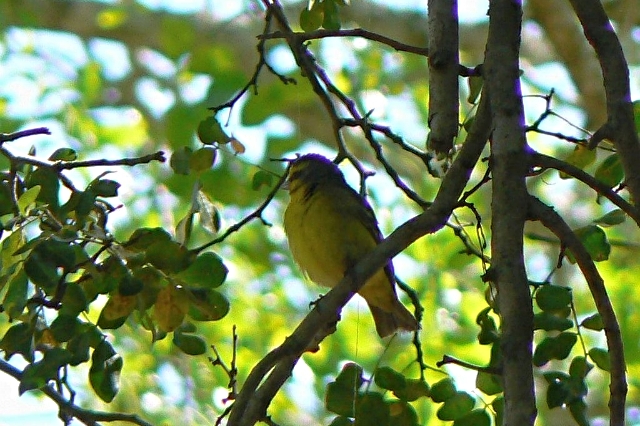
Tembe Elephant Park, 4 September 2014
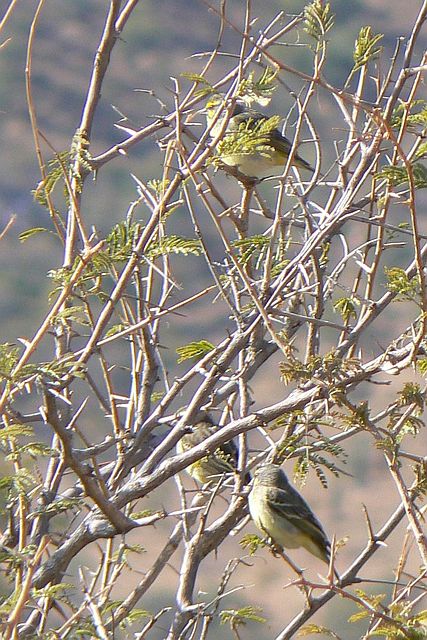
Mapungubwe National Park, 18 August 2014
Identification: Size small; see canary key; sexes alike. Eyebrow, cheeks, rump and underparts light yellow; crown to back dull green, streaked dark brown; eyestripe and malar stripe black; flanks greyish (diagnostic); yellow rump and white-tipped tail diagnostic in flight. Immature: Paler than adult; breast and flanks streaked brownish.
Distribution: Africa S of Sahara; in South Africa confined to SE, NE and N from about Uitenhage, E Cape, and Bloemfontein, Orange Free State, to NE Namibia.
Habitats: Any woodland, thornveld, riverine bush, gardens, parks, exotic plantations.
Habits: In pairs or small family groups when breeding; gregarious in flocks of 20-30 birds (rarely up to 100) in winter, sometimes in company with other small seedeating birds. Forages on ground or in bushes and trees; may hawk insects in air; when disturbed takes off for nearest bush with bouncing flight and tweety callnotes. Male sings from conspicuous perch; several males may sing in concert and chase each other aggressively. Common cagebird in Mozambique.
Food: Seeds (including Casuarina), insects, flowers, leaves of Hibiscus.
Breeding: Season: September to April in KwaZulu-Natal, October to April in Gauteng, September to March in Mozambique. Nest: Small cup of grass, herbs and roots, bound with spider web; lined with plant down and fine rootlets; diameter of cup about 5 cm, depth about 5 cm; 1-6 m above ground in fork of bush, tree or creeper; built by both sexes. Clutch: 2-5 eggs (usually 3-4). Incubation: 13-14,5 days by ♀ only. Nestling: 16-24 days; fed by both parents.

